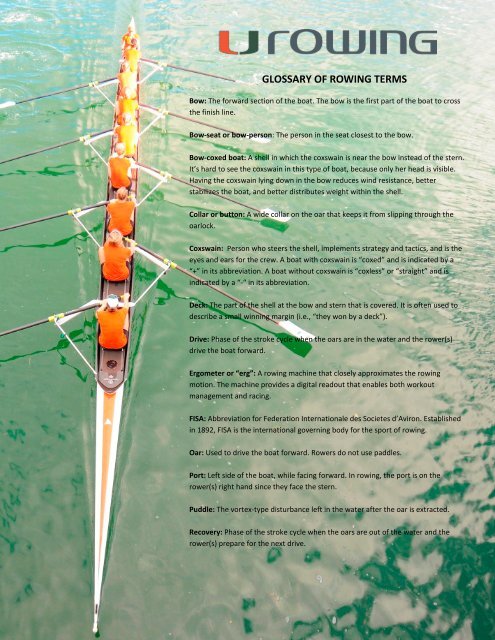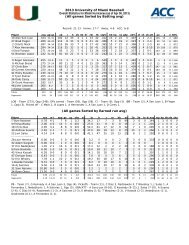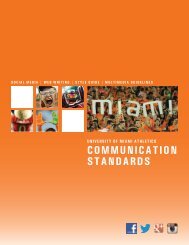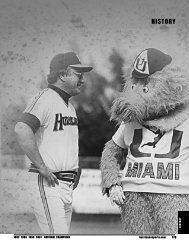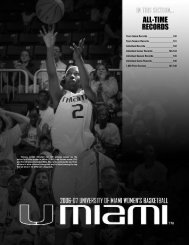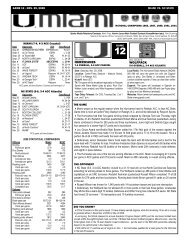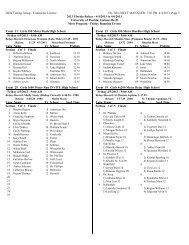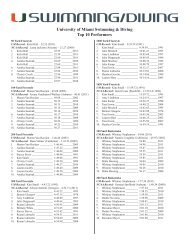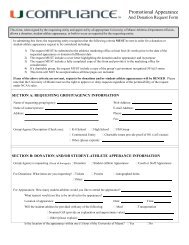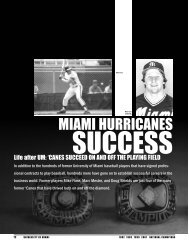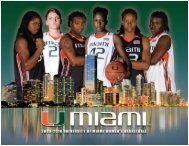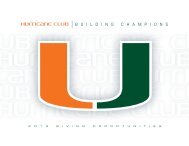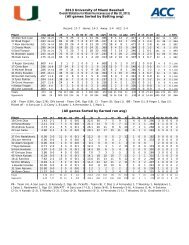Create successful ePaper yourself
Turn your PDF publications into a flip-book with our unique Google optimized e-Paper software.
<strong>GLOSSARY</strong> <strong>OF</strong> <strong>ROWING</strong> <strong>TERMS</strong><br />
Bow: The forward section of the boat. The bow is the first part of the boat to cross<br />
the finish line.<br />
Bow-seat or bow-person: The person in the seat closest to the bow.<br />
Bow-coxed boat: A shell in which the coxswain is near the bow instead of the stern.<br />
It’s hard to see the coxswain in this type of boat, because only her head is visible.<br />
Having the coxswain lying down in the bow reduces wind resistance, better<br />
stabilizes the boat, and better distributes weight within the shell.<br />
Collar or button: A wide collar on the oar that keeps it from slipping through the<br />
oarlock.<br />
Coxswain: Person who steers the shell, implements strategy and tactics, and is the<br />
eyes and ears for the crew. A boat with coxswain is “coxed” and is indicated by a<br />
“+” in its abbreviation. A boat without coxswain is “coxless” or “straight” and is<br />
indicated by a “-“ in its abbreviation.<br />
Deck: The part of the shell at the bow and stern that is covered. It is often used to<br />
describe a small winning margin (i.e., “they won by a deck”).<br />
Drive: Phase of the stroke cycle when the oars are in the water and the rower(s)<br />
drive the boat forward.<br />
Ergometer or “erg”: A rowing machine that closely approximates the rowing<br />
motion. The machine provides a digital readout that enables both workout<br />
management and racing.<br />
FISA: Abbreviation for Federation Internationale des Societes d’Aviron. Established<br />
in 1892, FISA is the international governing body for the sport of rowing.<br />
Oar: Used to drive the boat forward. Rowers do not use paddles.<br />
Port: Left side of the boat, while facing forward. In rowing, the port is on the<br />
rower(s) right hand since they face the stern.<br />
Puddle: The vortex-type disturbance left in the water after the oar is extracted.<br />
Recovery: Phase of the stroke cycle when the oars are out of the water and the<br />
rower(s) prepare for the next drive.
Rigger: The apparatus that holds the oar outside the hull of the shell. Modern<br />
riggers are typically made of either aluminum or carbon fiber and come in the<br />
“wing” variety, which attached to a flange on the top of the boat, or the more<br />
traditional “side-mount” variety, which attached to the side of the hull.<br />
Run: The run is the distance the shell moves during the recovery phase. You can<br />
figure the distance a shell moves in one stroke cycle by looking for the distance<br />
between the puddles made by the same oar.<br />
Scull(s): The smaller oars used in the discipline of sculling<br />
Sculling: One of the two disciplines of rowing – the one where scullers use two<br />
smaller oars or sculls. Singles (1x), doubles (2x) and quads (4x) are all sculling boats.<br />
The “x” refers to sculling. Sculling boats are almost always without coxswain, with<br />
coxed quad (4x+) being an exception used in many parts of the world, especially<br />
among juniors.<br />
Shell: Can be used interchangeably with boat.<br />
Slide: The set of runners for the wheels of each seat in the boat.<br />
Starboard: Right side of the boat, while facing forward. In rowing, the starboard is<br />
on the rower(s) left hand since they face the stern.<br />
Stern: The rear of the boat; the direction the rowers are facing.<br />
Stretcher or Footstretcher: Where the rower’s feet go. The stretcher consists of<br />
two inclined footrests that hold the rower’s shoes. The rower’s shoes are bolted<br />
into the footrests.<br />
Stroke-seat or stroke-person: The rower who sits closest to the stern. The stroke<br />
initiates the timing and rhythm for the crew.<br />
Sweep: Sometimes simply referred to as “rowing” (to differentiate from sculling),<br />
sweep is one of the two disciplines of rowing – the one where rowers use only one<br />
large oar. Pairs (2- or 2+), fours (4- or 4+) and the eight (8+) are sweep boats.<br />
Swing: The movement of the body’s torso back and forth within the stroke cycle.<br />
Swing most often refers to the movement of the torso during the recovery phase of<br />
the stroke. The swing has much to do with the sense of rhythm that rowers feel in<br />
the boat.


